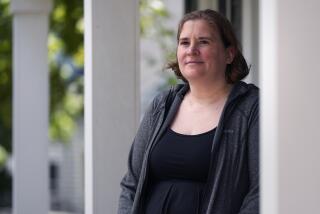Information Opinions on Today’s Topics : School Meal Funding: Food for Thought
The House of Representatives voted last week to end federal funding of free and subsidized meals to schoolchildren. The federal program would be replaced by block grants, which give states more choices in how to spend the money. Currently, the Los Angeles Unified School District has the largest breakfast program in the United States--serving 187,000 children a day--and one of the largest lunch programs, according to the Board of Education.
*
What would be the effect of reforming school breakfast and lunch programs?
Ted Johnson, assistant principal at San Fernando Elementary School:
“(At) our school, probably like many poor area schools, we serve two meals a day. A lot of the children don’t get a third. We have kids who have three or four helpings and if you start cutting back, you’ll play havoc on the kids’ minds as well as their bodies. I think we try to do a little extra, as much as we can without getting ourselves in trouble. We serve from 750 to 825 breakfasts and lunches a day. Our school is one of the few (where) everybody qualifies for free lunches. There is probably no more than seven or eight kids that bring a lunch from home.”
Julie Korenstein, member of the Los Angeles Board of Education:
“The problem is there is the unknowns of how the states will use the money. It could be turned back into a lunch program, but frankly, we don’t know. It is very, very harmful to children, who cannot learn on empty stomachs. Brains do not function when stomachs are hungry. There are many children that come out of cultures of poverty. Often, the only meals they have are breakfast and lunch. Some eat as much as they can on Friday because they don’t know if they will eat on the weekend. We are very active in trying to get block grant proposals stopped. We do not feel that this is the way our program should be run.”
Warren Lund, director of food services for the Los Angeles Unified School District:
“We are currently serving 600,000 meals every day. That’s breakfast and lunch. We currently receive from the federal government in the neighborhood of $160 million based on the number of meals we serve. If the state gives 20% to another service, that’s $32 million. There are several options we have to look at: cutting back, charging more for the meals, maybe cutting back on the quality of the meals.”
Barry Sackin, president of the Southern California School Food Services Assn.:
“If the bill comes out of the Senate as it came out of the House, it will potentially have a devastating effect for a lot of reasons. There is so much uncertainly because there is so much that is not defined that we cannot quantify what can happen. Yes, it will be bad. Yes, children who are defined as economically disadvantaged will potentially no longer have meals. Because there is no requirement to offer meals at no cost, we don’t see a lot of good coming from block granting.”
Maria Balakshin, director of the child nutrition and food distribution division of the California Department of Education:
“I think it is unfortunate that child nutrition is part of this welfare reform package. In my opinion, child nutrition programs are in order to maximize education. We need to provide good nutrition to students. I think that we provide the necessary nutrition in breakfast and lunch so they get the necessary nutrients and calories to give them the energy to pay attention and be ready to learn.”
More to Read
Sign up for Essential California
The most important California stories and recommendations in your inbox every morning.
You may occasionally receive promotional content from the Los Angeles Times.










